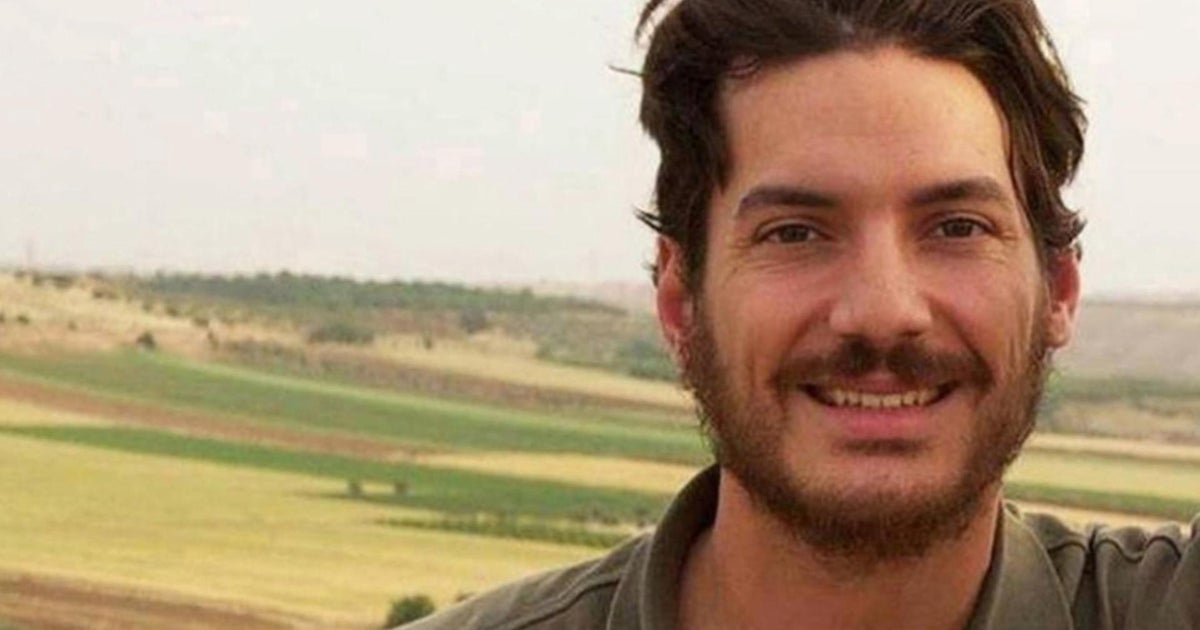CBS News
Blinken says Israel has accepted U.S.-backed Gaza cease-fire proposal, but skepticism remains

Watch CBS News
Be the first to know
Get browser notifications for breaking news, live events, and exclusive reporting.
CBS News
How director Robert Eggers is reviving “Nosferatu” for a new generation

Watch CBS News
Be the first to know
Get browser notifications for breaking news, live events, and exclusive reporting.
CBS News
When a teen’s medication stopped working, he decided to try a surgery that could stop his episodes for good

When Isaac Klapper was 10 years old, he started having regular, daily episodes that caused his head to twitch and his eyes to turn to the side.
His pediatrician recommended a neurologist, who diagnosed Klapper with a movement disorder and prescribed medication. For five years, that kept the episodes at bay — but when he was a sophomore in high school, they returned, interrupting daily life and throwing his prior diagnosis into question.
Klapper spent the rest of his high school career missing out on milestones. He couldn’t drive, because of the chance he’d have an episode behind the wheel. It affected his social life and his ability to focus in class, because he always wondered when the next one might strike.
“It was pretty devastating,” said Klapper. “It was hard to handle. I just didn’t want to go anywhere because I was afraid of one happening.”
Meanwhile, his parents, Karen and Mark Klapper, watched him struggle and searched for answers. A neurologist in their home city of Toledo, Ohio was trying “medication after medication,” Mark Klapper said. After two years, there was no change, so the Klappers decided to look elsewhere for answers. A movement specialist said Klapper didn’t have a movement disorder: Instead, he was having frequent seizures. The family went to the Cleveland Clinic, where he was diagnosed with epilepsy.
Klapper Family
Dr. William Bingaman, a neurosurgeon and the vice-chairman of the neurological institute and head of the section of epilepsy surgery at Cleveland Clinic, had a new suggestion for treating Klapper’s seizures. Instead of more medications, he wanted to try a surgical approach, which, if successful, would stop the seizures for good.
Saying yes to brain surgery was one of the easiest decisions of his life, said Klapper, who is now 18.
“It was really a relief to just make a call, without hesitation,” Klapper said. “I was like, ‘I can’t live like this anymore.'”
Treating epilepsy with surgery
Epilepsy takes many different forms and results in multiple kinds of seizures. Klapper was having focal seizures, which are more minor episodes when electrical activity comes from one part of the brain, said Dr. Kerri Neville, a pediatric neurologist at University of Michigan Health C.S. Mott Children’s Hospital, who was not involved in Klapper’s care. The seizures can include signs like jerking or twitching movements, changes in vision or other senses, and cognitive or mood changes, depending on what function the affected part of the brain controls.
Because of how broadly epilepsy can present, it can be “very, very challenging” to diagnose, Neville said. A movement disorder isn’t an uncommon misdiagnosis, she said. Once epilepsy has been diagnosed, doctors can start using medications to try and treat it: There are about 30 medications that exist to treat epilepsy, and about two-thirds of people can get complete control of the condition with one or two of those options. However, for the remaining third, seizures are still a problem.
Klapper Family
That’s where surgical options like the one Bingaman suggested come in. The surgical option used depends where the seizure activity is located, among other factors, Bingaman said. That’s found with brain scans and imaging.
The scans showed that Klapper had a “grape-sized abnormality” in his brain, Bingaman said. The abnormality was in his left cingulate gyrus, a major part of the limbic system that helps process emotions, regulate behavior and control automatic motor functions, and is “kind of buried in the middle of the brain,” Bingaman said. The abnormality could have been one of two things: cortical dysplasia, which means cells migrated unusually during brain development, or a brain tumor. The only way to determine the cause of the abnormality was to remove it.
Expanding access to surgical treatment for epilepsy
Both Bingaman and Neville said that while surgical treatment for epilepsy can be effective for patients who don’t respond to medication, it’s not a commonly used option. Epilepsy affects between 2 and 3% of the U.S. population, Bingaman said, and of those patients, about “40% or so may be surgical candidates.” But only about “two to three thousand” operations are done per year, Bingaman said, with the Cleveland Clinic alone handling about 500 cases annually, even though there are “a million people that are candidates for surgery right now.”
“It’s incredibly underutilized,” Bingaman said.
There’s no one reason why this option isn’t used more often, Bingaman and Neville said. Epilepsy can be misdiagnosed, as in Klapper’s case. It may also be hard to find the region of the brain where the seizure activity is originating. Doctors may not know to recommend surgery, Bingaman said. Patients may be wary about undergoing brain surgery, and going down the surgical route can also be expensive and time-consuming for patients and their families, especially if they don’t live near a center that does these operations regularly, Neville said.
Operating and finding answers
On March 8, 2024, Klapper was wheeled into surgery. The operation to remove the abnormality took about five hours, Bingaman said.
“It was a really long five hours for us,” said mom Karen Klapper. “It was a very long, scary few hours. It was a rough day for us.”
Klapper Family
Once the abnormality was removed, it was brought to pathologists for testing. They were able to determine that the abnormality was cortical dysplasia — not a brain tumor. That meant that now that the abnormality had been removed, Klapper likely wouldn’t have any more seizures.
Since then, Klapper has been seizure-free. More brain imaging and scans showed that the abnormality is gone, and now he’s turned his attention to applying for colleges.
“It felt really good to know that this probably going to stay for the rest of my life, like I’m not going to have to worry about this,” Klapper said. “I can just really focus on the future and how I’m not going to be tied down by this anymore. I can just go out and start my life.”
CBS News
In Christmas message, Pope Francis criticizes gossip among Vatican staff

Pope Francis told Vatican bureaucrats on Saturday to stop speaking ill of one another, as he once again used his annual Christmas greetings to admonish the backstabbing and gossiping among his closest collaborators.
A wheezing and congested-sounding Francis, who just turned 88, urged the prelates instead to speak well of one another and undertake a humble examination of their own consciences in the Christmas holiday season.
“A church community lives in joyful and fraternal harmony to the extent that its members walk in the life of humility, renouncing evil thinking and speaking ill of others,” Francis said. “Gossip is an evil that destroys social life, sickens people’s hearts and leads to nothing. The people say it very well: Gossip is zero.”
“Beware of this,” he added.
By now Francis’ annual Christmas address to the priests, bishops and cardinals who work in the Vatican Curia has become a lesson in humility — and humiliation — as Francis offers a public dressing down of some of the sins in the workplace at the headquarters of the Catholic Church.
Andrew Medichini / AP
In the most biting edition, in 2014, Francis listed the “15 ailments of the Curia,” in which he accused the prelates of using their Vatican careers to grab power and wealth. He accused them of living “hypocritical” double lives and forgetting — due to “spiritual Alzheimer’s” — that they’re supposed to be joyful men of God.
In 2022, Francis warned them that the devil lurks among them, saying it is an “elegant demon” that works in people who have a rigid, holier-than-thou way of living the Catholic faith.
This year, Francis revisited a theme he has often warned about: gossiping and speaking ill of people behind their backs. It was a reference to the sometimes toxic atmosphere in closed environments such as the Vatican or workplaces where office gossip and criticism circulate but are rarely aired in public.
Francis has long welcomed frank and open debates and even has welcomed criticism of his own work. But he has urged critics to tell it to his face, and not behind his back.
Francis opened his address Saturday with a reminder of the devastation of the war in Gaza, where he said even his patriarch had been unable to enter due to Israeli bombing.
“Yesterday children have been bombed. This is cruelty, this is not war,” he said.
The annual appointment kicks off Francis’ busy Christmas schedule, this year made even more strenuous because of the start of the Vatican’s Holy Year on Christmas Eve. The Jubilee is expected to bring some 32 million pilgrims to Rome over 2025, and Francis has a dizzying calendar of events to minister to them.
Andrew Medichini / AP
After addressing the Vatican prelates, Francis issued a less critical address to the Vatican’s lay employees who gathered in the city state’s main audience hall along with their families. Francis thanked them for their service and urged them to make sure they take time to play with their children and visit grandparents.
“If you have any particular problems, tell your bosses, we want to resolve them,” he added at the end. “You do this with dialogue, not by keeping quiet. Together we’ll try to resolve the difficulties.”
It was an apparent reference to reports of growing unease within the Vatican workforce that has been called out by the Association of Vatican Lay Employees, the closest thing the Vatican has to a labor union. The association has in recent months voiced alarm about the health of the Vatican pension system and fears of even more cost-cutting, and demanded the Vatican leadership listen to workers’ concerns.
Earlier this year 49 employees of the Vatican Museums — the Holy See’s main source of revenue — filed a class-action lawsuit in the Vatican tribunal complaining about labor woes, overtime and working conditions.
Unlike Italy, which has robust labor laws protecting workers’ rights, Vatican employees often find they have fewer legal recourses available to them when problems arise. Employment in the Vatican however is often sought-after by Italian Catholics: Aside from the sense of service to the church, Vatican employment offers tax-free benefits and access to below-market housing.














